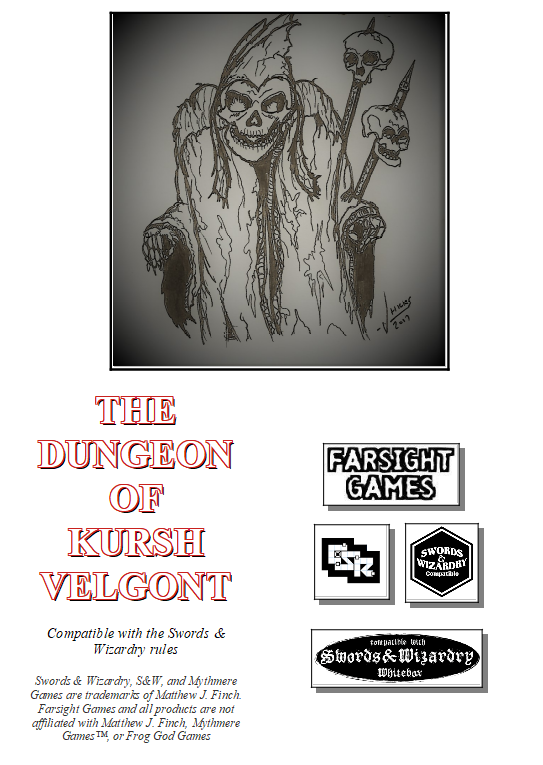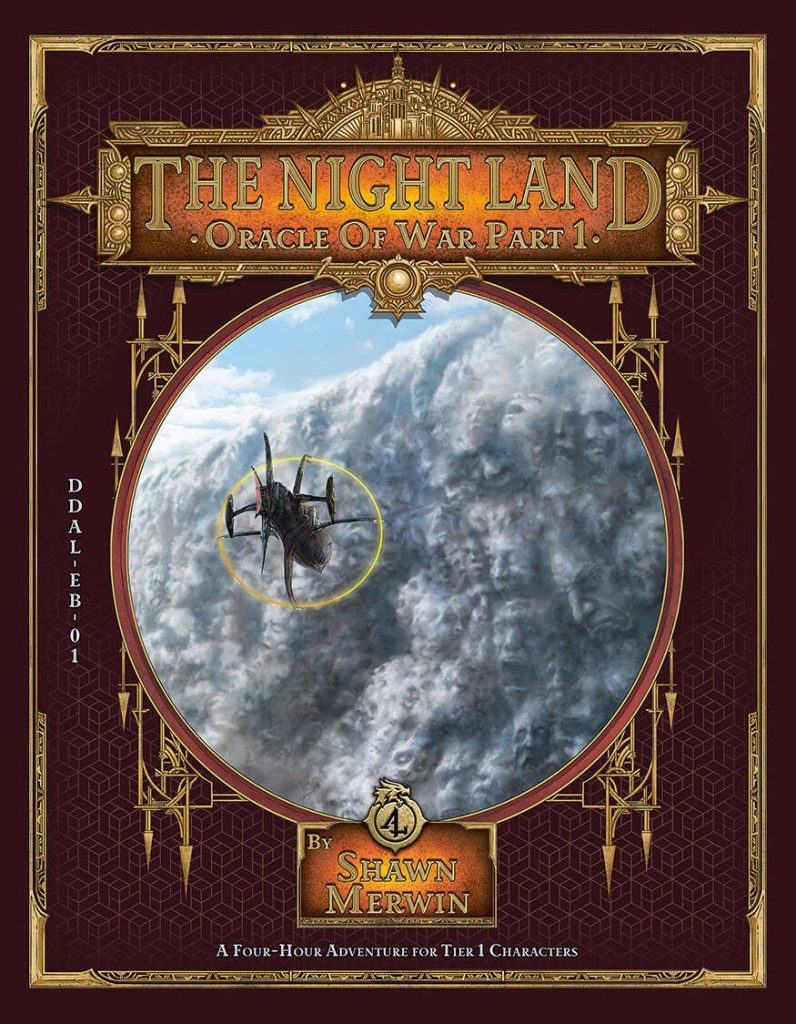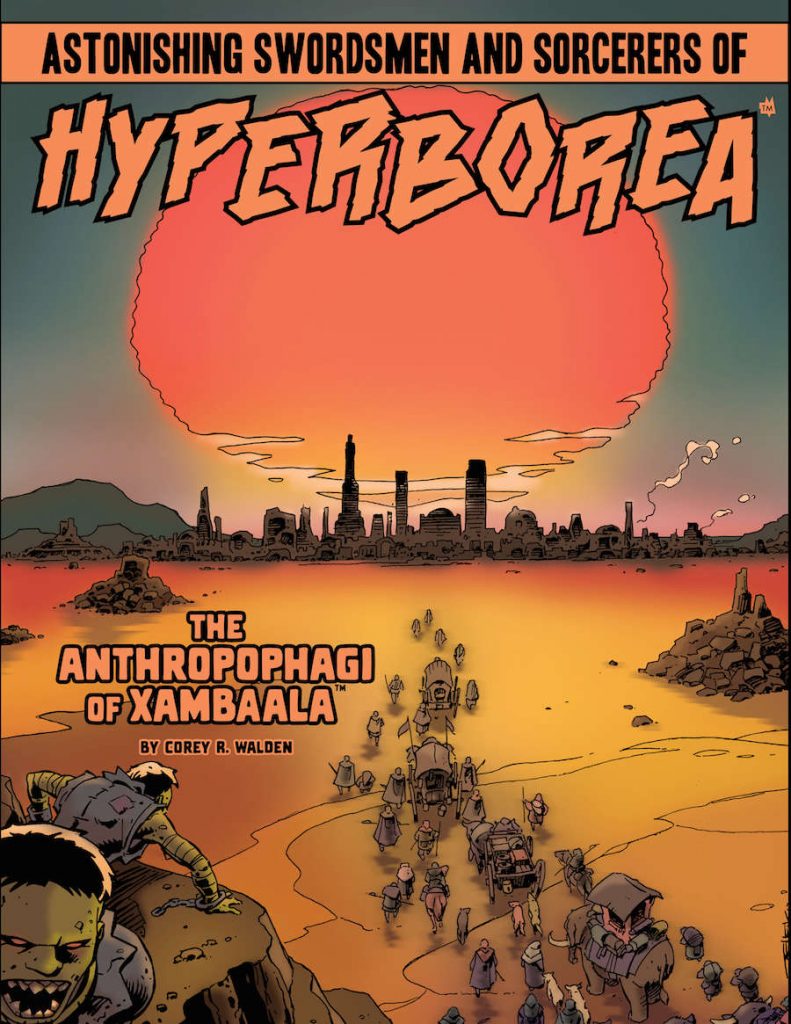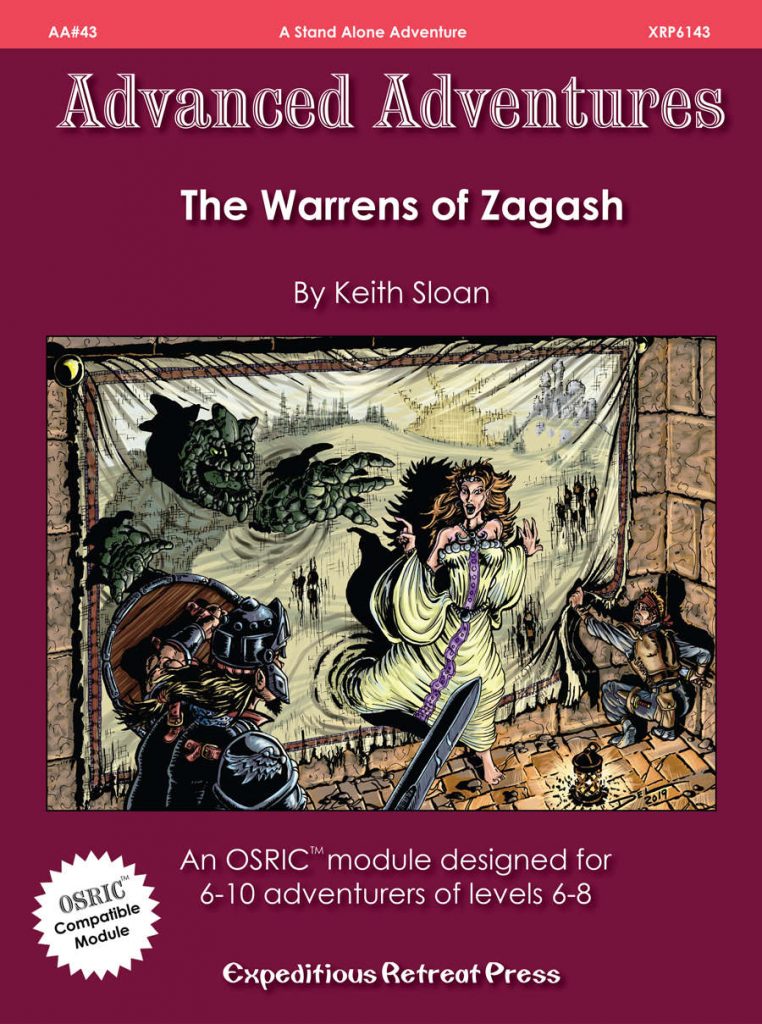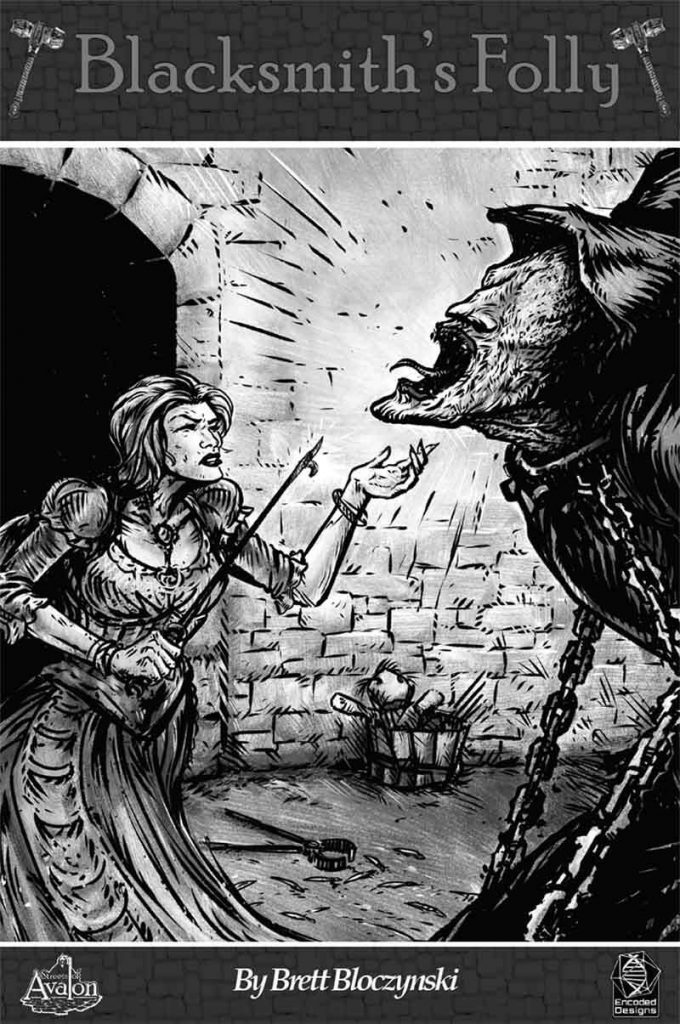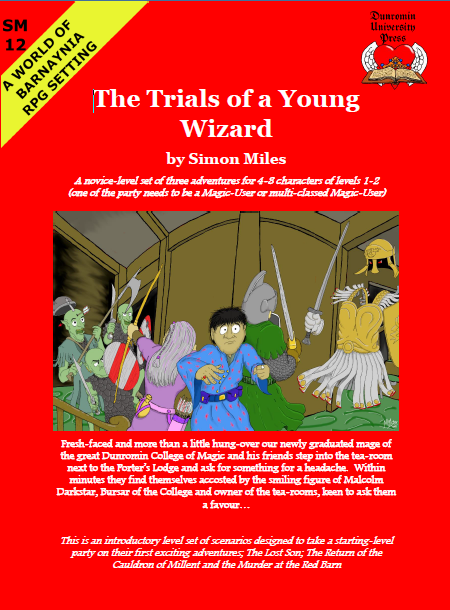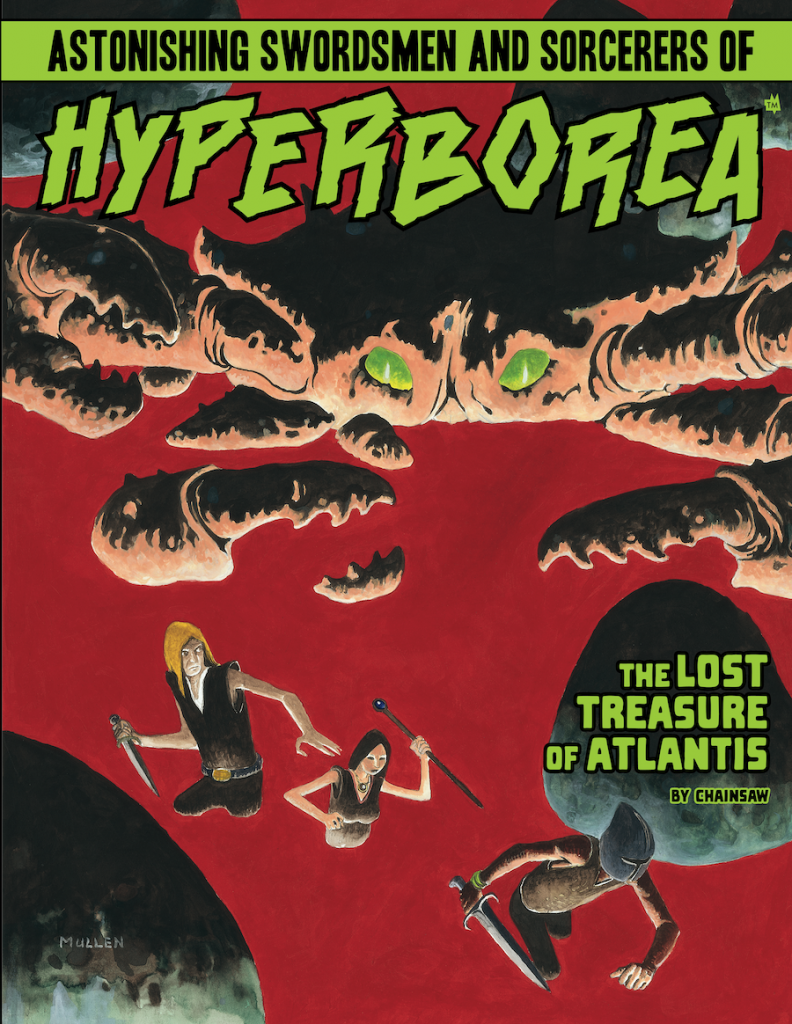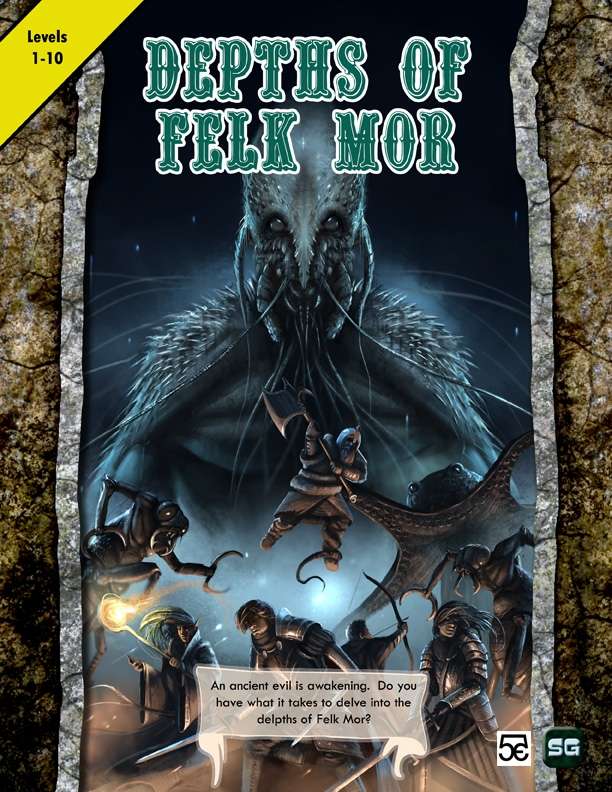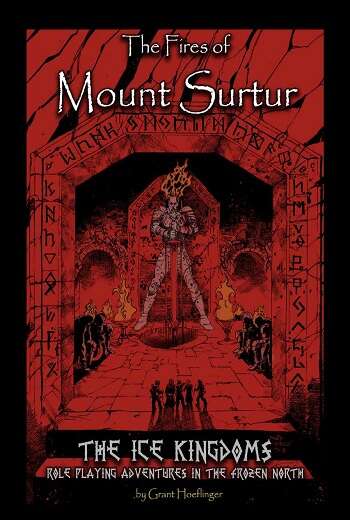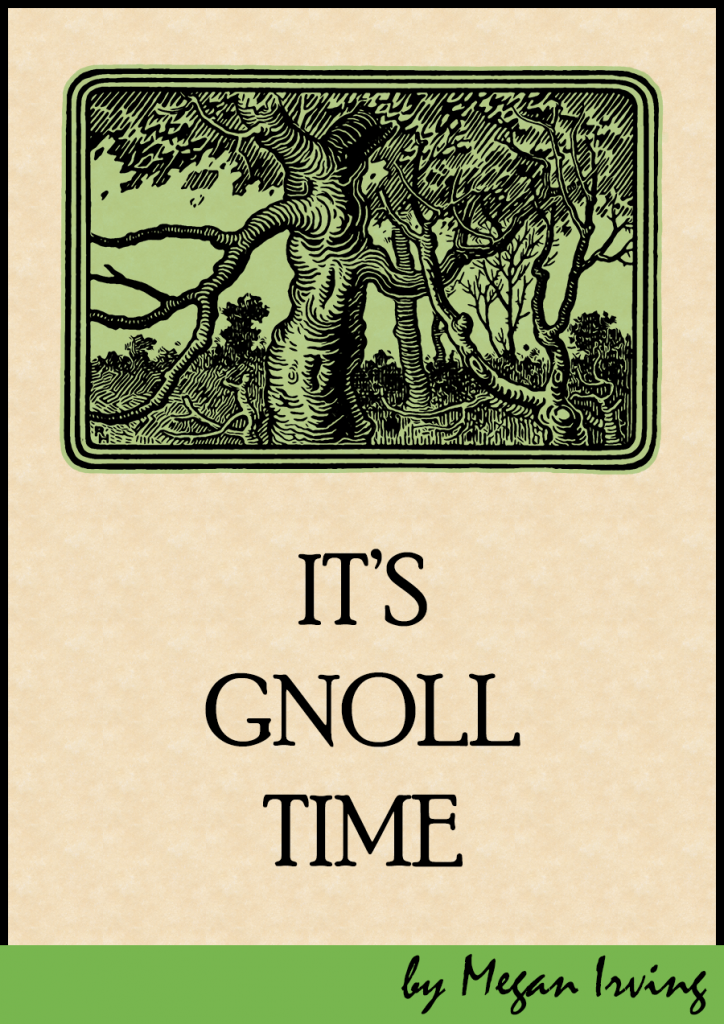
by Megan Irving Self Published For every game system ever Level ?
Deep in the forest is a village that has been destroyed by gnolls. Gnolls are corrupted hyena monsters that crave innocent flesh. They eat anyone in their way and spread across the land like a plague, corrupting more hyenas and creating more gnolls as they go. The only way to stop them is to track them down and kill them all. This is your quest.
This twenty page adventure, in zine digest format, details a forest region plagued by a gnoll war band. It has some interesting writing and items and is trying to be a kind of loose framework for an adventure. Alas it was a little too unstructured for me to figure out … which was exacerbated by the issue I had figuring out the order the pages were supposed to be in(!)
Let’s imagine a forest. There’s a smoking ruin of a village in the middle of it. There are locations in the forest (maybe?) and some NPC’s to run in to. Thus the adventure is intended to be a a kind of investigation in to the ruined village (I guess?) and a then some travel in the forest meeting people and, eventually, dealing with the gnolls.
Each page of the digest represents one “idea”/location/NPC. There’s a short little intro text, that reads like read-aloud (IN FUCKING ITALICS! DON”T USE FUCKIGN ITALICS FOR LONG BLOCKS OF FUCKING TEXT! IT”S FUCKING HARD TO READ!) There are short and evocative little snippets of text that introduce the place/person to the party. A stench of rotting flesh. Rattling bones, teeth clattering, or a stretched humanoid form made of shadows with a strange rune on its forehead, drifting between trees and strange obelisks … not bad little snippets of text for introducing something new to the players, two or three sentences, full of flavour. What follows is a little background, goals, etc, some “fronts” (more on that later) and then some notes, like where to find them, how to use them, etc.
There’s a random treasure table, with no real treasure set. A magic cloak: the wearer isn’t easily noticeable even when they should stick out like a sore thumb. A golden tiara, might be magical, or just extremely valuable. Someone’s definitely looking for it. A magical bow and arrow that fire arrows of pure darkness that can punch through anything, but can only be fired on a moonless night. That’s some fucking PHAT L00T! The magic retains its wonder.
The NPC’s have goals. The “fronts” for various entries appear to be a kind of timeline of events for them, a progression as they further their own goals while the party is fucking about.
At this point things start to break down.
I will admit that I had a hard time comprehending this adventure. It’s a zine thing where you can print if out and fold it to make a booklet, or read the other version provided on the screen. The screen read seemed … like the pages were out of order? And then the zone, when printed, came out backwards and, again, seemed like the pages were out of order? So, heads up, I dug through it but, ultimately, I’ve decided that my confusion is in some part to the type of product being presented.
The designers is, I think, trying to do something relatively new. A zine, one page per concept, a kind of framework of an adventure, open ended with the DM to bring themselves but enough structure to provide the grounding needed. That is, I think, the intent. Unrealized.
You can see some of this “looseness” of the framework in the description of that tiera: someone is looking for it. SOMEONE. Likewise the looseness of the loot proper, not given per location but on its own table to fill in the encounters with as they see fit. Further, the random encounters are “a peaceful and beautiful place to rest” or “a feral and aggressive animal that can be calmed and healed with love and kindness.” While these two tables are the extreme, there’s also a kind of looseness, as exemplified by the tables, present in most other areas. Down to the map which is more of a conceptual map, disguised as a real one. In isolation I’m ok with all of these. A conceptual map can be ok. Ideas to sprinkle in the adventure are ok. A little looseness is ok. But when EVERY element is this loose, and combine it with a kind of looseness in the layout/organization of the book itself (which may be my own lack of ability to understand it) then I’m just a confused mess. I can’t figure out how/why/where the graveyard is, in relation to other things, where the gnolls are, where the scavengers are, where the NPC’s are, or anything else. Of everything presented in the adventure the only thing I can truly understand is “The Village” the first/center location, and even then I don’t really understand how it is supposed to work. And the “fronts” that are advancing with time? Either the adventure is too short or there are too many or the wanderer chart is too small or … I don’t know. I get the IDEA but I think it’s implemented in a manner that I might call “unrefined” if I were being generous.It doesn’t work.
And that’s is, essentially, my summary of the adventure as a whole. It’ doesn’t work. I can’t really figure out how its supposed to work. (And after 2000+ reviews I’d like to think I have some comprehension in that area …) Mechanical issues with the layout/printing. The front issue. The kind of aggressive abstraction of conceptual encounters and items … would it hurt to say WHO is after the tiera? That would add color. Or the creature that needs love? Why the emphasis on the conceptual instead of the concrete?
I think I can understand what Megan is going after here. And I think I can see the promise in the concept. And the evocative writing and treasure is good. I think it just needs to be a bit more grounded. More specificity. If I understand the intent correctly then I think the goals can still be accomplished while being more specific in wanderers, magic, encounters … maos. EVerything more … comprehensible, without resorting to something like a more traditional format. I look forward to seeing how this format progresses in the future. And “I look forward to …” are not words I write often. It’s interesting as a design idea and needs some further refinement, if I understand what’s being attempted.
This is $5 on DriveThru. There’s no preview. Ouch! Put in a preview, please? And there’s no level given. And it’s listed for every system under the sun from 0e to 5e, include 4e. This is another clue to that … abstracted framework thingy that is being aimed at.
https://www.drivethrurpg.com/product/299031/Its-Gnoll-Time?1892600

